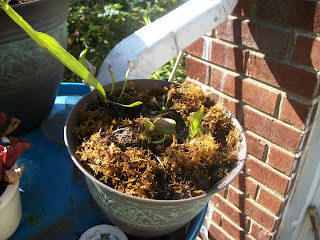
This was an interesting Fair and I was able to show my plants.
It was ten days of fun and education. The Davidson County
Master Gardener Association displays an educational booth.
We did a lot of talking about plants and such. I enjoyed talking
about carnivorous plants. We set it up like a carnival sideshow
to draw people into our booth .
The agriculture building is next to the livestock barns
and it has a lot of insect activity. I got the opportunity
to tell folks how carnivorous plants emit pheromones
that attract these insects. The flies would hang out all around plants. Enjoy these photos of the plants during and after
the fair.




